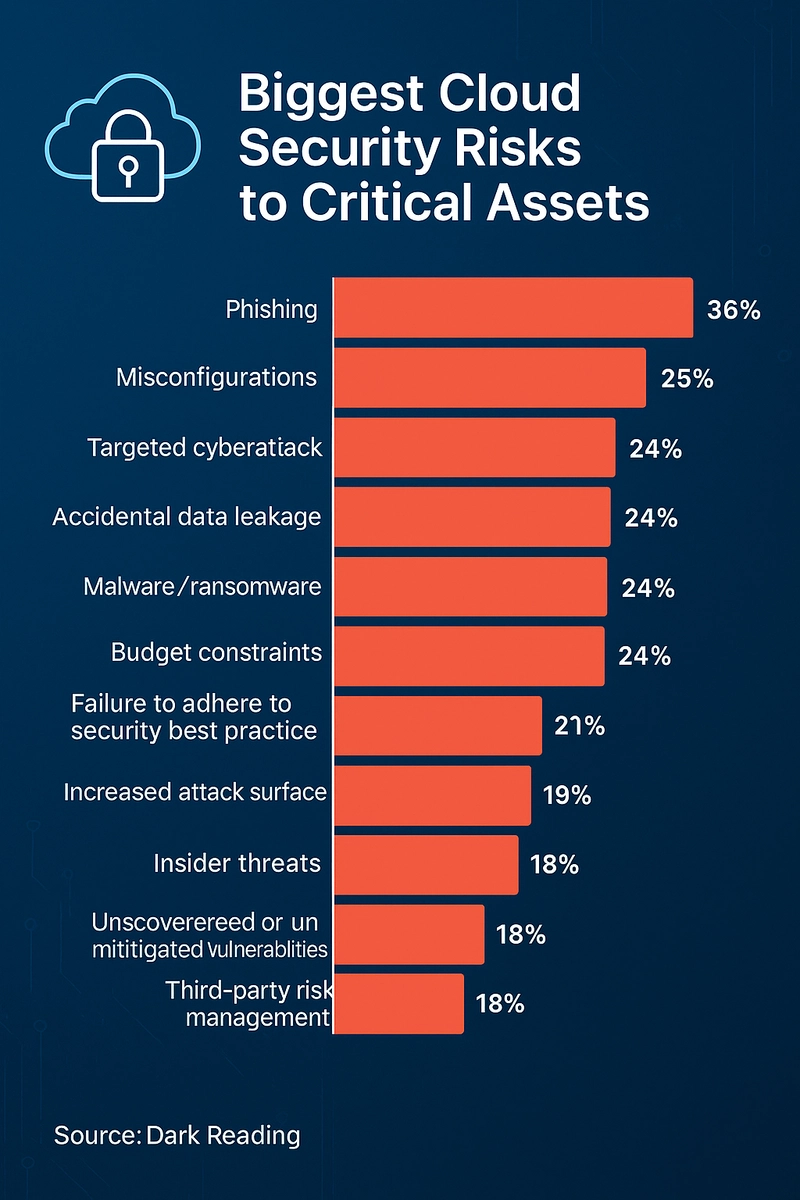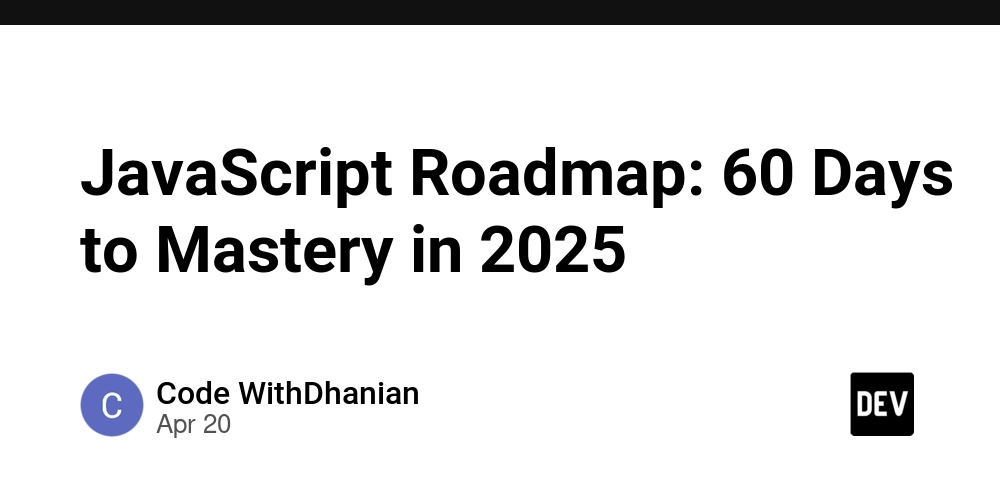Top Cloud Security Vulnerabilities in 2025: Threats Exposing Your Data and Assets
The Cloud Security Wake-Up Call In 2025, cloud adoption is at an all-time high. Organizations are leveraging cloud services for scalability, flexibility, and cost-efficiency. However, this rapid shift has also expanded the attack surface, introducing new vulnerabilities and threats. Cloud security and cloud infrastructure security have become paramount concerns for businesses worldwide. Recent surveys indicate that the most significant security risks to critical cloud and SaaS assets include: These statistics highlight the pressing need for robust cloud security measures. In this blog, we will delve into the top threats exposing your critical assets and explore best practices for mitigating these risks. The Cloud Security Gap: Why Are Critical Assets Still at Risk? Most organizations already use cloud services. They have security tools in place. They run compliance checks. Yet, breaches still happen. Why? The issue isn’t always a lack of tools or policies. It’s often the gap between security intentions and execution. Let’s dig into what’s driving that gap in 2025 and how businesses can close it. 1. The Illusion of Coverage Many organizations operate under the assumption that their cloud provider secures everything. But cloud security is a shared responsibility. Cloud providers secure the infrastructure; it's up to businesses to secure their applications, identities, and data. That line often gets blurred until something goes wrong. Closing the gap: Clarity on shared responsibility is step one. Conduct regular ownership reviews across your cloud stack to ensure nothing critical slips through the cracks. 2. Tool Overload, Visibility Undermined Cloud environments are now managed using a cocktail of CSPM, CIEM, workload protection, endpoint solutions, and more. Ironically, more tools often lead to less visibility. Teams struggle to prioritize real risks when signals are scattered and noisy. Closing the gap: Prioritize platforms that unify and correlate threat data across cloud workloads, identities, and infrastructure, especially those with integrated cloud infrastructure security capabilities. 3. Security Fatigue in Fast-Moving Environments DevOps cycles are faster than ever. New services spin up and down daily. Meanwhile, security teams are drowning in misconfiguration alerts, unused IAM roles, and constant patch notifications. Cloud security teams are overwhelmed and outpaced. Closing the gap: Automation is non-negotiable. Use AI-powered vulnerability prioritization and automated remediation to align security workflows with the speed of DevOps. 4. Lack of Contextual Intelligence Not all vulnerabilities are created equal. A publicly exposed misconfigured storage bucket holding sensitive customer data is more critical than an internal dev server with the same CVE. Yet many teams still rely on static scoring systems. Closing the gap: Adopt threat intelligence and risk-scoring frameworks that incorporate exploitability, exposure, business context, and attacker behavior. This is where tools that combine cloud security posture management with real-time threat feeds shine. Bridging the cloud security gap isn’t about adding more tools,it’s about tightening integration, improving context, and reducing friction between teams and technologies. As threats evolve, your strategy needs to mature with them. Next, let’s explore how to do that with best practices that actually reduce risk, not just check boxes. Strategic Risk Reduction: Best Practices To effectively mitigate these threats, organizations should adopt the following best practices: 1. Infrastructure and Container Security Securing the underlying infrastructure and containers is fundamental. Implementing security measures such as network segmentation, vulnerability scanning, and secure container configurations can prevent unauthorized access and data breaches. 2. Data Privacy and Compliance Controls Adhering to data privacy regulations and implementing compliance controls ensures that sensitive information is handled appropriately. Regular audits and compliance checks can help maintain adherence to standards such as GDPR, HIPAA, and SOC 2. 3. Data Loss Prevention (DLP) Policies DLP policies help monitor and control data transfers, preventing unauthorized sharing of sensitive information. These policies can be tailored to specific organizational needs and regulatory requirements. 4. Comprehensive Identity and Access Management (IAM) Implementing robust IAM solutions ensures that only authorized users have access to critical resources. Features such as multi-factor authentication, role-based access controls, and single sign-on enhance security and user experience. 5. Advanced Encryption Features Encrypting data at rest and in transit protects it from unauthorized access. Utilizing advanced encryption standards and key management practices is essential for maintaining data confidentiality and integrity. 6. Endpoint Protection In

The Cloud Security Wake-Up Call
In 2025, cloud adoption is at an all-time high. Organizations are leveraging cloud services for scalability, flexibility, and cost-efficiency. However, this rapid shift has also expanded the attack surface, introducing new vulnerabilities and threats. Cloud security and cloud infrastructure security have become paramount concerns for businesses worldwide.
Recent surveys indicate that the most significant security risks to critical cloud and SaaS assets include:
These statistics highlight the pressing need for robust cloud security measures. In this blog, we will delve into the top threats exposing your critical assets and explore best practices for mitigating these risks.
The Cloud Security Gap: Why Are Critical Assets Still at Risk?
Most organizations already use cloud services. They have security tools in place. They run compliance checks. Yet, breaches still happen. Why?
The issue isn’t always a lack of tools or policies.
It’s often the gap between security intentions and execution. Let’s dig into what’s driving that gap in 2025 and how businesses can close it.
1. The Illusion of Coverage
Many organizations operate under the assumption that their cloud provider secures everything. But cloud security is a shared responsibility. Cloud providers secure the infrastructure; it's up to businesses to secure their applications, identities, and data. That line often gets blurred until something goes wrong.
Closing the gap: Clarity on shared responsibility is step one. Conduct regular ownership reviews across your cloud stack to ensure nothing critical slips through the cracks.
2. Tool Overload, Visibility Undermined
Cloud environments are now managed using a cocktail of CSPM, CIEM, workload protection, endpoint solutions, and more. Ironically, more tools often lead to less visibility. Teams struggle to prioritize real risks when signals are scattered and noisy.
Closing the gap: Prioritize platforms that unify and correlate threat data across cloud workloads, identities, and infrastructure, especially those with integrated cloud infrastructure security capabilities.
3. Security Fatigue in Fast-Moving Environments
DevOps cycles are faster than ever. New services spin up and down daily. Meanwhile, security teams are drowning in misconfiguration alerts, unused IAM roles, and constant patch notifications. Cloud security teams are overwhelmed and outpaced.
Closing the gap: Automation is non-negotiable. Use AI-powered vulnerability prioritization and automated remediation to align security workflows with the speed of DevOps.
4. Lack of Contextual Intelligence
Not all vulnerabilities are created equal. A publicly exposed misconfigured storage bucket holding sensitive customer data is more critical than an internal dev server with the same CVE. Yet many teams still rely on static scoring systems.
Closing the gap: Adopt threat intelligence and risk-scoring frameworks that incorporate exploitability, exposure, business context, and attacker behavior. This is where tools that combine cloud security posture management with real-time threat feeds shine.
Bridging the cloud security gap isn’t about adding more tools,it’s about tightening integration, improving context, and reducing friction between teams and technologies.
As threats evolve, your strategy needs to mature with them. Next, let’s explore how to do that with best practices that actually reduce risk, not just check boxes.
Strategic Risk Reduction: Best Practices
To effectively mitigate these threats, organizations should adopt the following best practices:
1. Infrastructure and Container Security
Securing the underlying infrastructure and containers is fundamental. Implementing security measures such as network segmentation, vulnerability scanning, and secure container configurations can prevent unauthorized access and data breaches.
2. Data Privacy and Compliance Controls
Adhering to data privacy regulations and implementing compliance controls ensures that sensitive information is handled appropriately. Regular audits and compliance checks can help maintain adherence to standards such as GDPR, HIPAA, and SOC 2.
3. Data Loss Prevention (DLP) Policies
DLP policies help monitor and control data transfers, preventing unauthorized sharing of sensitive information. These policies can be tailored to specific organizational needs and regulatory requirements.
4. Comprehensive Identity and Access Management (IAM)
Implementing robust IAM solutions ensures that only authorized users have access to critical resources. Features such as multi-factor authentication, role-based access controls, and single sign-on enhance security and user experience.
5. Advanced Encryption Features
Encrypting data at rest and in transit protects it from unauthorized access. Utilizing advanced encryption standards and key management practices is essential for maintaining data confidentiality and integrity.
6. Endpoint Protection Integration
Integrating endpoint protection solutions with cloud infrastructure helps detect and respond to threats originating from user devices. This integration ensures comprehensive security coverage across all access points.
7. SIEM Integration
SIEM systems collect and analyze security data from various sources, providing real-time insights into potential threats. Integrating SIEM with cloud environments enhances visibility and incident response capabilities.
8. Geographic Data Control
Controlling the geographic location of data storage and processing helps comply with regional data sovereignty laws. Organizations should work with cloud providers that offer data residency options to meet these requirements.
9. Compliance Certification
Achieving compliance certifications demonstrates a commitment to security and builds trust with customers and stakeholders. Regularly reviewing and updating compliance measures ensures ongoing adherence to evolving standards.
So, What's the Bottom Line?
Embracing a Proactive Security Posture
As cloud adoption continues to rise, so do the associated security challenges. Organizations must remain vigilant and proactive in addressing these threats. By understanding the top risks and implementing strategic best practices, businesses can safeguard their critical assets and maintain trust with their stakeholders.
Investing in cloud security and cloud infrastructure security is not just a technical necessity but a business imperative. As we navigate the complexities of the digital landscape in 2025 and beyond, a robust security posture will be the cornerstone of sustainable success.
Organizations like Network Intelligence (NI) empowers organizations to secure their cloud infrastructure with strategic precision. Leveraging AI-driven insights and advanced technologies across CSPM, CWPP, and real-time threat intelligence, NI delivers comprehensive protection across complex cloud environments. From eliminating blind spots to enabling proactive defense, NI is the trusted partner for robust, end-to-end cloud security.








































































